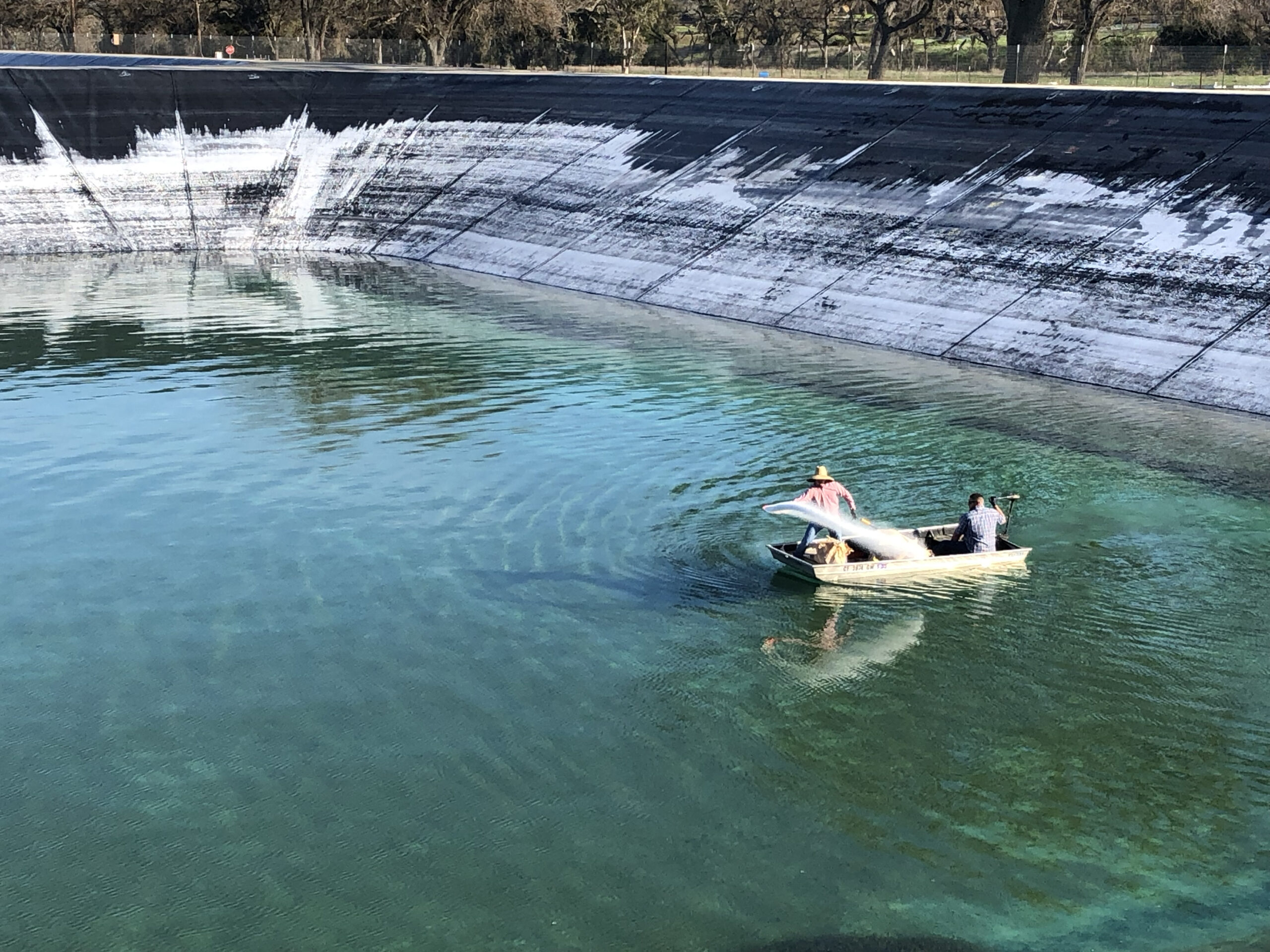Essential Tips for Reservoir Maintenance: A Guide for Growers

By Dylan Boone, Ag Water Specialist
A well-managed reservoir is a critical part of maintaining your irrigation systems. But when should you start thinking about treatment? And what steps can you take to keep your reservoir in the best shape possible? Let’s dive into the timeline and best practices for reservoir maintenance.
Initial Signs That Treatment Is Needed
Be proactive with reservoir treatment(s) before any problems occur or become visible. Look out for these early warning signs:
- Change in water clarity
- Algae blooms at the bottom of reservoir and/or around perimeter
- Aquatic weeds
- Algae matting on the surface of the reservoir
Remember, you don’t want your reservoir to be crystal clear. A slight tint is beneficial to slow photosynthesis that promotes weed growth and algae.
What Brings on the Need for Treatment?
Several factors can create an environment conducive to algae blooms and other issues:
- Temperature: Heat is the main culprit. Warm water promotes the growth of algae.
- Dirty Source Water: Water feeding into the reservoir that contains excess levels of bacteria can spur algae growth.
- Stagnant Water: Between irrigation events, water often sits stagnant, leading to problems.
Impact of Reservoir Treatments
Effective treatment of your reservoir can have significant positive impacts:
- Better Water Quality: Cleaner water applied through your filtration system and reduced plugging of the micro irrigation system.
- Prevents Filters from Excess Backflushing: This reduces wasted energy and associated costs.
- Keeps Filters Clean: Clean filters mean less maintenance.
- Reduced Filter Maintenance: Regular treatment minimizes the need to replace the sand in your filter station, saving you time and money.
Recommended Products for Treating Reservoirs
We understand every reservoir and application is different. Reach out to your qualified Meras applicator. Meras has the knowledge, equipment, and licenses to get the job done.
Products are highly effective for reservoir maintenance:
- Proprietary Blends: specific chemical application for unique problems/algae classifications
- Copper Cocktail Blend (Copper Sulfate Pentahydrate): Combats algae blooms
- Dry and liquid chlorine products: Useful for ongoing maintenance
Even a clean reservoir can experience rapid algae blooms during hot weather due to stagnant water and high temperatures. Regular treatments are essential.
Cost-Effective Treatment Strategy
For the best results without breaking the bank, consider the following treatment schedule:
- Pre-Season (March)
- Peak Temperatures (Summer): Treat whenever you notice blooms starting
- End of Year (December): Winterize your reservoir with a final treatment
A reservoir is a valuable asset for holding water, but it requires regular care to ensure algae and other issues don’t get out of control. By staying proactive and treating your reservoir at the right times, you can maintain an efficient and effective irrigation system for your operation.
Reach out to your Meras rep with any questions or drop us a note at meras.com/contact.
